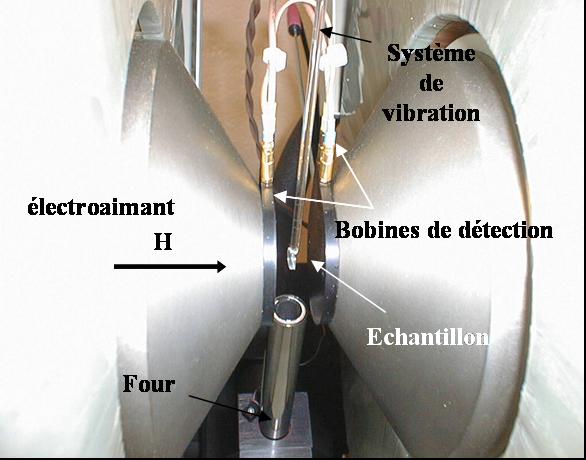The object of this vibrating sample magnetometer (VSM, DMS Society) is to determine according to the applied magnetic field and the temperature, the magnetic properties of thin layers and small crystals of various nature (magnetic oxides, …).
The principle of this setup rests on a flux method which consists in measuring flux induces (F) in a coil by periodic displacement of the sample. More precisely, one makes vertically vibrate (Z axis) at a frequency (f) a sample placed at the center of a coil of measurement with a constant amplitude. The induced voltage in the detection coils by a magnetic sample of moment (µ) is obtained starting from the theorem of reciprocity:
F = (B/I)µ
where B is the magnetic field which would be produced by a fictitious current I circulating in the detection coils.
The induced voltage is given by the relation:
E = – dF/dt = – µ d(B/I)/dz.dz/dt
One of the interests of this method of measurement is its speed because the awkward parasitic drifts are pseudo-continuous signals easily eliminated by synchronous detection.

Performances:
Sensitivity: 10-9 A.m2 to 300 K / 10-8 A.m2 at variable temperature.
Maximum magnetic field: 2.8 Teslas.
Temperature: 100 K – 1000 K with the presence of an oven + cooling system under gas nitrogen. Possibility of carrying out measurements such as Field Cooling (FC), Zero Field Cooling (ZFC), annealings under controlled atmosphere (Argon…).
Rotation system allowing to take angular measurements (in plan and out of plan).

The VSM (vibrating sample magnetometry) device of SPEC allows magnetisation measurements with B applied field up to 14 T.
Pour en savoir plus…..





